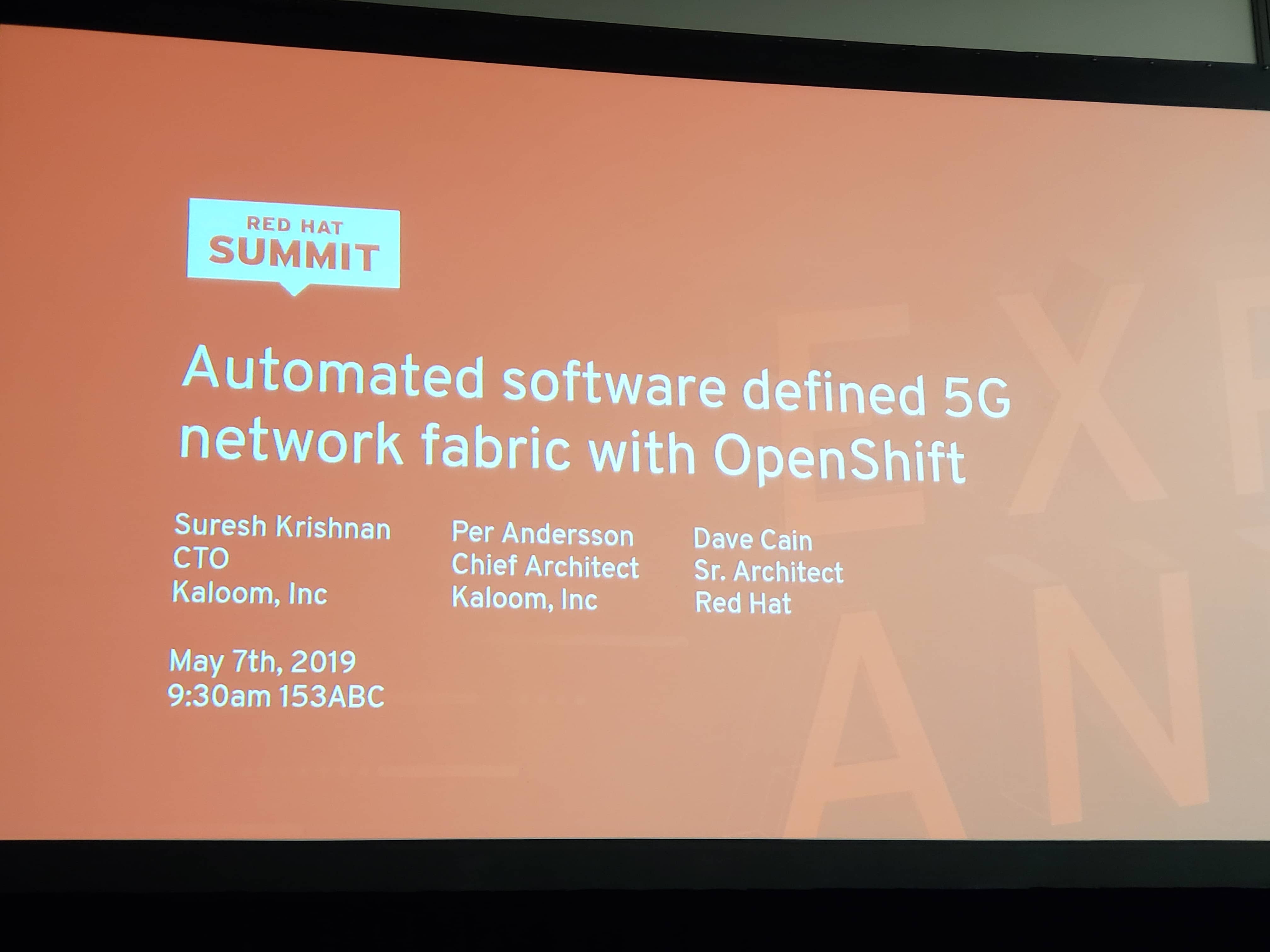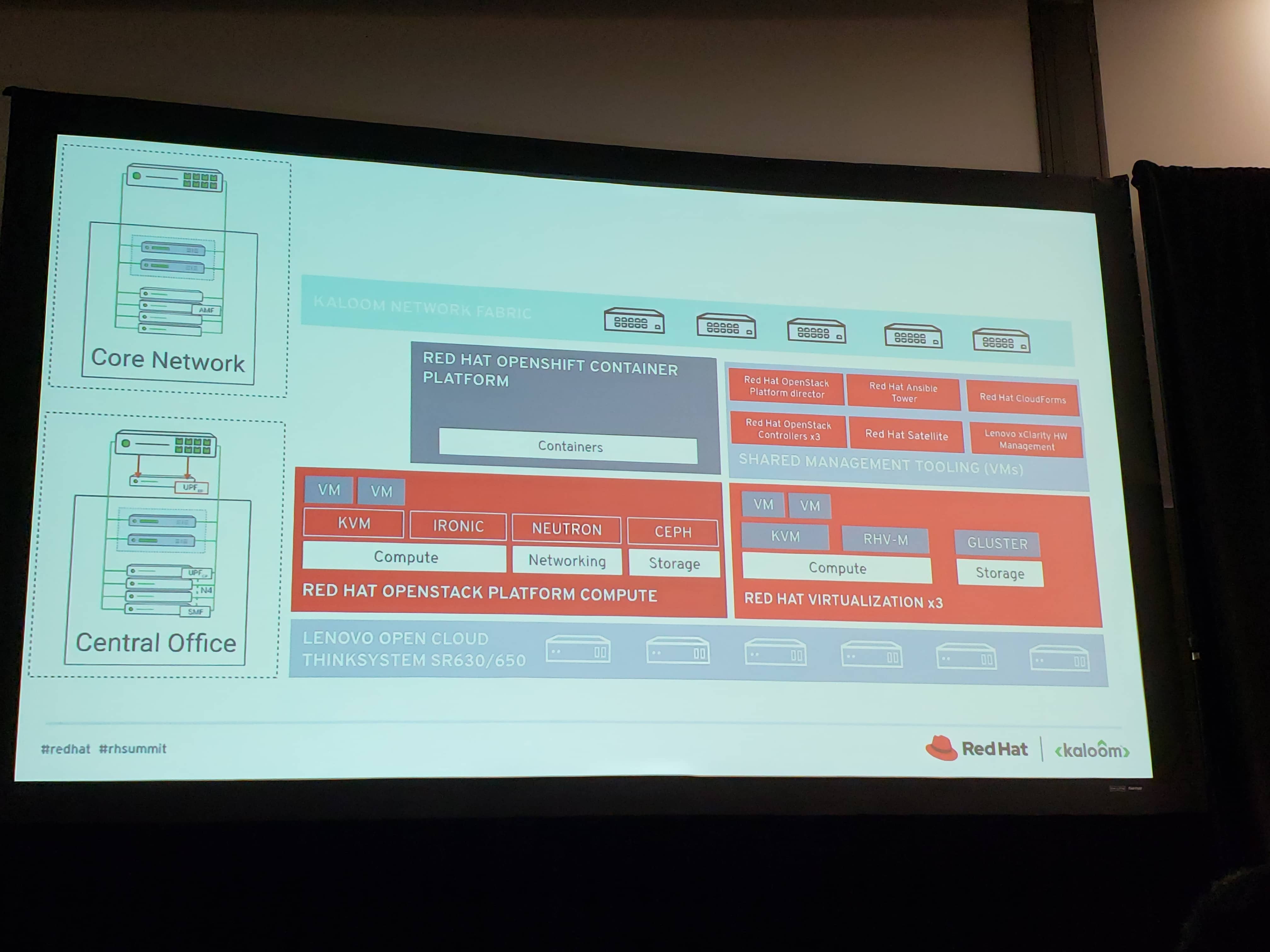Year after year, there seem to be more conferences, conventions, meetups, and user groups – just like acronyms, a never-ending supply in the Technology space!
Here at Fierce Software we proudly support our vendors, and we’re known for making a show of it too. We don’t just wave our flags at events, we make our Ferociousness known, be that have a little Putt-Putt fun or loading you up with salt-water taffy, and we have the benefit of receiving support and participation in return, such as with our Ansible NOVA User Group. This meetup is going down in history as we have presentations by some of the top Ansible veterans – Justin Nemmers, former GM of Ansible at Red Hat, now at MindPoint Group, and Tim Appnel, Product Manager of Ansible Galaxy at Red Hat! This is on top of the raffles, chili dogs, and keg o’ beer!
Even with everything we’ve got going on, Fierce makes sure to attend Red Hat Summit – one of the largest technology conferences of the year. In fact, some of our Ferocious Folk have been going to Red Hat Summit for 10 years! That’s a lot of vendor swag! Jokes aside, Red Hat Summit is a target not just because of its size or swag, it’s a strategic point of what we do.
Red Hat Summit offers us not only the time to connect with our partners, vendors, and customers in one place, but also to learn and rally around the latest developments around Enterprise Open-Source Software.
There’s a lot to unpack from this year’s Red Hat Summit Conference – a week-long event that started for us at the Executive Exchange and wrapped up after a series of announcements, discussions, meetings, movies, and more. New versions of Red Hat Enterprise Linux, OpenShift, partnerships with Microsoft Azure after a guest keynote from Satya Nadella himself, farmers using Open-Source – where is one to start?! Let us guide you through some of the highlights that are important to us, our partners, and most importantly our customers.
Inner Growth
Even though we technically started on Monday, it was more so of a day to land and get acquainted with everything, and take a roll call. Tuesday is when the pot really gets to cooking for us, and we had a number of great sessions. During the morning we sat in the Red Hat NAPC Success session led by D. Martin, VP North America Sales and Mike Byrd, VP Public Sector Channel.
We heard of the APEX program on the commercial side of the house, as well as the enhanced focus being applied to “Strategic, Enterprise, and SMB/SMG” accounts on the Public Sector side. Scott Masson, VP Global Mid-Market & SMB further outlined how partners could achieve ‘selling success’ by partnering with their Red Hat counterparts on Mid-Market and SMB opportunities. Thanks to our close partnership with Red Hat, we’re collaborating even more on these opportunities to provide our expertise to a wider audience.
During a few sessions on Tuesday, we heard of how the next wave of 5G networking is being driven by Red Hat OpenShift and Ansible in edge clouds. Wow! Meaning the new iPhone XS+5 will be running on private clouds powered by Red Hat! Probably a good time to brush up on some of that OpenShift 101 and Ansible for Networking training.
Wednesday and Thursday were heavy on the meetings for us – Andrew Kendall, Sales Director, Ken Moini, Lead Solution Architect, and Eric Updegrove sat down with a table full of ‘who’s who’ of IBM’ers and Arrow representatives to identify how Fierce’s strengths could best assist IBM’s channel. Vito Foderaro, IBM Hybrid Could Channel Executive mapped out IBM’s Cloud Private (ICP) practice, which helped us lay out how ICP could be integrated into Fierce’s existing demo and workshop infrastructure. We plan on reconvening with the team again at Arrow’s IBM Software Accelerator and More Event in Nashville, TN June 11th-13th. If you’re in Nashville for the event too, make sure to drop by and say hello – Ken will give you a guided tour of Nashville (bars)!
Another great take away for us was on Thursday morning we met with Red Hat Marketing Executives to discuss Fierce’s home-grown analytics and outreach platform which we’ve lovingly called our Rapid Analytic Web Resource, or RAWR for short. RAWR is the culmination of months of planning and work to produce a scalable enterprise marketing and analytics platform to drive engagement and better collaborative experiences – complete with an interactive Partner Portal! What this means is that our customers can get text reminders sent to their phone for our events, campaigns can be driven with powerful metrics for detailed targeting and segmentation, and our partners can access all of their associated information and more in one pane of glass.
Of course, we like to sip our own champagne so RAWR is powered by Open-Source Software, runs on containers in Red Hat’s OpenShift Container Platform, is Continuously Deployed via CloudBees Core when new pushes are made to the various GitLab Enterprise Edition repositories and registries. Our Marketing counterparts loved the capabilities Fierce is able to offer with RAWR and we put forward a plan to begin offering its capabilities to a select number of Red Hatters before we release company-wide.
Open-Source for Food Security and National Security
One of the highlights for us was when the U.S. Citizenship and Immigration Service (USCIS) presented their DevSecOps platform, running in a hybrid cloud on top of Red Hat OpenShift, CloudBees Core, and basically most of our line card. This was extremely rewarding to see and discuss with them after their presentation, helping add extra gumption behind our work with other similar customers in the ever-changing DevSecOps landscape.
USCIS is laying the groundwork for other government agencies and contractors to adopt. 80% of their pipelines run through this common architecture, anyone can get up and started quickly in their environment, and it all has to do with enablement and picking the right tools for the right job.
During their presentation, USCIS made the point of there being numerous tools out there to do almost anything imaginable in the Software Development Lifecycle. They first migrated everyone to a common Source Code Management (SCM) platform, in their case being GitHub. They then not only enabled their operators and developers with the tools they need but also provided the upskilling needed for the consumers and producers of their services. Communication, enablement, and training was key in their success and being the Red Hat Training Partner of the Year for a few years we can echo the same sentiment that our customers who embrace training have much easier and more successful missions.
Open-Source is also empowering the next generation of farmers and agriculture specialists. Red Hat has been producing a series of Open-Source Stories which are short documentaries into the effect Open-Source Software has on culture, landscapes, people, and more. They released a new Open-Source Story around “Farming for the Future” and how Open-Source Software is helping educate our coming farmers by preserving the traditionally inherited knowledge of the trade across seasons and years and making it available for easy consumption and action. It was a wonderful production and I highly recommend watching it over on the Red Hat site.
Trade Floor Trekin’
Once the expo floor opened we made a series of sweeps across the arena, which took longer than you’d expect. There was plenty of space dedicated to the various partners and vendors and we stopped by almost all of them, and some a few times. There were familiar faces and friends all around, including run-ins with customers which is always wonderful – great to see you again, J!
As long-time Red Hat partners and an Open Source VAR we are always being introduced to and scouring for other Open Source companies that embrace the same principles as Red Hat and are complementary to the Red Hat stack. With the growing trend towards containers and DevSecOps we found that many of the booths that we spent time on revolved around Automation, Container Security, Monitoring, and Cloud Native Technologies.
We met with a number of vendors, though a couple that stand out are SonaType and Twistlock. SonaType is no stranger to us – we use their Nexus product in our Red Hat DevSecOps Workshop as a wonderful repository for artifacts generated. They have a set of other complementary technologies that fit in the Software Development Lifecycle very well and we were excited to chat and check out some of these solutions that could be of benefit to our customers. Twistlock started out as a Container Security platform but has evolved in a short amount of time into something much more holistic, and can be fit into different parts of the CI/CD process to deliver security assurance, health, and visibility into your hybrid cloud workloads. A lot of our customers already use Twistlock and many of them ask for it by name so we were excited to learn how we could better support our customers in their missions.
When we weren’t touring you could find us either at the ImmixGroup booth or swimming through the Developers Corner, which was a great set up. You could get some hands-on experience deploying containers, creating operators, and working through the new Red Hat Enterprise Linux 8 features like AppStreams, built-in Ansible, and containers with Podman, Buildah, and Skopeo. The best part is that after you were done learning a little taste of these technologies you probably got a free shirt or four out of it!
Counting the Mic Drops
Oh yeah, you liked how I casually mentioned playing with Red Hat Enterprise Linux 8? What can I say, I’m smooth like bubble gum, baby.
This year at Red Hat Summit there were a number of big expectations, too much to cover in a (what is now long) blog post – keynotes by Ginni Rometty, Michael Cawood at Lockheed Martin, and even Satya Nadella from Microsoft – having flown out right after an appearance at his own Microsoft Build convention! On top of that, they announced the General Availability of Red Hat Enterprise Linux 8 AT Red Hat Summit.
There’s a lot that RHEL 8 brings with it – a new package management system, built-in Ansible, new networking and storage overlays, and native container workloads just to name a few of the highlights. This is a distinct difference between current RHEL 7 builds and the operating needs in the new RHEL 8 build, which means that there are some new things to learn.

If there’s anything we’ve learned from Red Hat Summit is that there’s a lot coming down the pike and training is going to be important when it comes to these emerging technologies, be that RHEL 8 or the coming OpenShift 4 – also announced at Red Hat Summit.
Don’t worry, you can still get your RHEL 7 based training and RHCSA/RHCE exams for a little while though it is important to know that they will be phased out soon enough. The best way to access the RHEL 7 and RHEL 8 training material would be through a Red Hat Learning Subscription, where you have both and, actually, all other Red Hat training offerings provided.
Got questions that need some answering? Want to get a jump on RHEL 8 training? Need to up the timeline on your RHEL 7 Certification Exams while they’re still available? Drop us a line and we’ll be more than happy to help you along!







